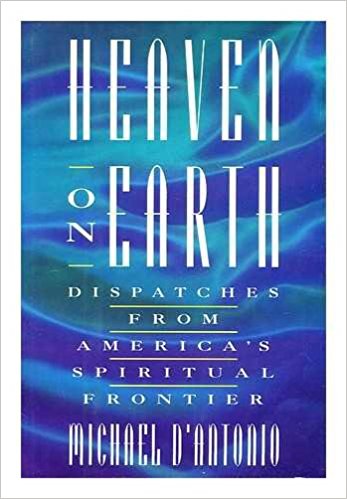The wide-eyed declamations of Shirley MacLaine to the contrary, there is nothing particularly new about the so-called New Age, that hodgepodge of religious borrowings from diverse sources ranging from the genuine (Buddhism, cybernetics) to the quackish (L. Ron Hubbard, Ignatius Donnelly). What is new—and surprising, in a creepy sort of way—is the number of Americans who now profess some sort of affiliation with the New Age. According to a recent study by sociologists at the University of California at Santa Barbara, 42 million customers are being served regularly in the New Age cafeteria of beliefs. If organized into a single group, they would constitute the nation’s third most populous church.
The foundation of this New Age is centuries old. Reinforced by the American tradition of religious dissent, it draws on charismatic Christian fundamentalism and the spirit-medium beliefs of certain evangelical sects founded in the last two centuries. In deference to the anti-Western tenor of the 1960’s, it borrows even more heavily from classical Asian religions, twisting them enough to offend any purist’s sensibilities. (Jamie Lee Curtis to Kevin Kline in the movie A Fish Called Wanda: “The central message of Buddhism is not ‘Every man for himself.’ . . . I’ve looked it up.”) Accordingly, the New Age—or rather, the manifold variations of the New Age—draws in billions of dollars a year.
The entertainment and news media (which these days are one and the same thing) have treated the subject superficially, except in a handful of titillating cases such as the matter of Elizabeth Clare Prophet and her Ascended Masters of the Great White Brotherhood, a wacky congregation that a couple of years ago was busily constructing bomb shelters in Montana against impending nuclear Armageddon. Instead, they have provided endless television specials on occultism, like Ghost, that embrace the New Age fad. For that reason alone Michael D’Antonio’s Heaven on Earth is welcome.
D’Antonio, a reporter on religion for Newsday, has spent the last few years tracking the New Age in its many guises. His discoveries are sobering, even a little frightening. He takes us to towns that have been appropriated by the New Age’s practitioners, among them Sedona, Arizona, wrested from the Tonto Apaches only to be turned into a loopy retreat for the spiritually bewildered; Mount Shasta, California, presumably a beacon for alien starships, to judge by its present inhabitants; and Carbondale, Illinois, where Buckminster Fuller has given way to Guru Mahara Ji. Along the way, he considers the ideas of such luminaries as a public school teacher who burbles, “I feel very connected to the Earth, to my spiritual self,” and one Louise Hay, who counsels victims of AIDS with the notion that they must be the reincarnated spirits of Nazi concentration-camp guards, “brought back to endure a fate similar to that of their victims.” (Strangely, this odd idea has found many followers among the disease’s sufferers.) He is particularly good on the goings-on at Maharishi International University, in rural Iowa, where Transcendental Meditation and “yogic flying” are among the few subjects taught under a tuition-fee schedule that rivals Harvard’s. He exposes the unlikely accomplishments of “psychic surgeon” Bernie Siegel, now a staple of that bastion of reason, PBS; best-selling guidance counselor M. Scott Peck, a master of the psychology of blaming others for one’s own flaws; and Lazaris, spirit medium or “channeler” to the rich and famous, whose followers like to claim credit for such things as having ended apartheid by meditating from afar through the spirits of de Klerk and Mandela. (I’d like to be making this up, but it’s true.) It almost goes without saying that such men and women are earning substantial fortunes spouting this and other nonsense, and that their market seems infinite.
Heaven on Earth is reportage, not sociology. D’Antonio offers plenty of useful observations—notably, that the New Age is the province of well-heeled, moneyed, white Anglo-Saxon Protestants, with few subscribers among the growing underclass. In his determination to be objective D’Antonio gives repellent ideas more benefit of doubt than they deserve, and he deliberately avoids “value judgments.” An unrepentant believer in certain Old Ways, I often found myself wishing that D’Antonio would cry, “Balderdash!” or even some stronger expletive, instead of simply smiling numbly at the countless charlatans he has met along his way. This is a heartless world, and while we all need succor, there’s entirely too much suckering afoot. D’Antonio might have said as much.
What he leaves unsaid remains for another book, awaiting which we can reread Nathaniel Hawthorne’s Blithedale Romance, a novel that skewers the New Age of the 19th century and retains its razor edge today. In the meanwhile. Heaven on Earth serves very well as a catalog of current tomfooleries. At the very least, it warns us of even stranger days to come.
[Heaven on Earth: Dispatches From America’s Spiritual Frontier, by Michael D’Antonio (New York: Crown Publishers) 422 pp., $20.00]

Leave a Reply